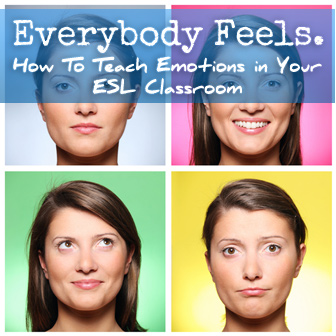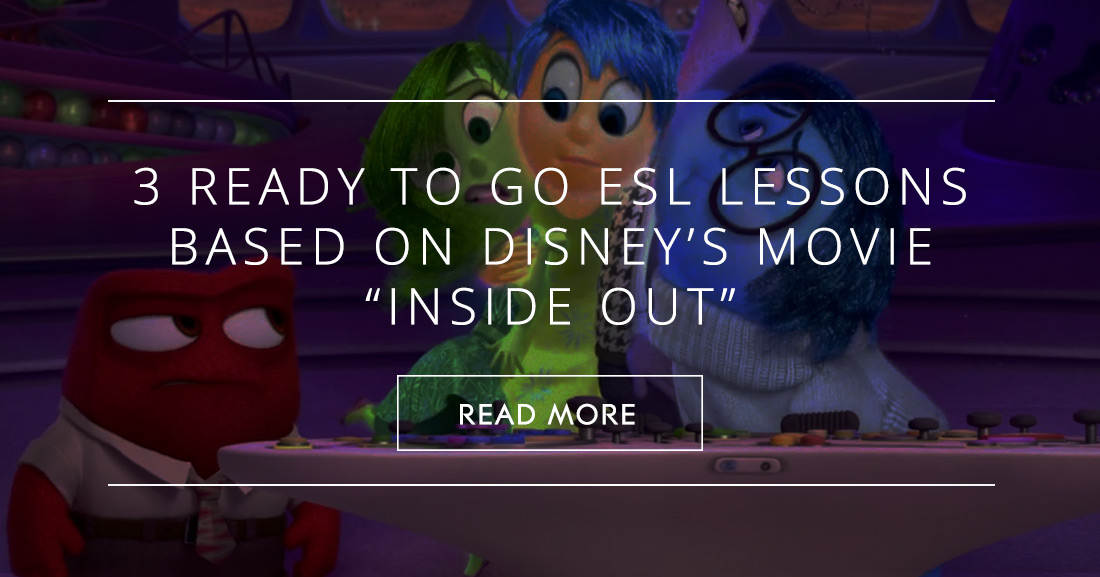How Do You Feel Today? Teaching Emotions in Your ESL Classroom


Watch the movie with your class, and then follow up the screening with one of the following print and go lesson plans. Each gives you multiple ways to use Disney’s popular move “Inside Out” for teaching language concepts.
Emotions are part of the core of who we are. This lesson plan looks at the different types of emotions we experience in our lives and challenges students to think of ways to respond to them appropriately.
Activity #1
In the movie, we see the escapades of Joy, Sadness, Disgust, Fear, and Anger, but the filmmakers could have focused on many other emotions. Take a few moments to brainstorm all the words for different emotions you can think of.
Working with two other students, group all of the emotions you listed into three or four general categories such as happy emotions, sad emotions, and confusing emotions.
Activity #2
Once you have divided your emotions into distinct categories, write a classification essay discussing the different types, or classes, of emotions.
For a classification essay, each of the body paragraphs should explain one class of items, in this case the categories you sorted your emotions into. For example, if you used the categories listed above, your body paragraphs would discuss happy emotions, sad emotions, and confusing emotions in three separate paragraphs. In your introduction, identify each of the classes in your thesis statement, which should come near the end of your introduction. Then in each body paragraph, be sure to include the following information.
Activity #3
We all have emotions, but we don’t often take the time to think about them in detail. Read some books about emotions such as The Feelings Book and A Little Book about Feelings. Then choose one emotion and talk with a partner. Work together to come up with several appropriate and inappropriate ways to respond to that feeling in class, in school, or in other places. If you like, work with your partner to write and illustrate a book on the emotion you chose and the best ways to respond to it.
Like in the movie, sadness can often be unwelcome to people who seek a continual level of happiness. This lesson plan challenges students to think of how sadness might be important in our lives and why it should, at times, be a welcome emotion.
Activity #1
At the beginning of the movie, Joy can’t see a reason for Sadness, so Joy tries to make every aspect of Riley’s life happy. She tries to eliminate Sadness completely.
Break into small groups, preferably ones with multiple home cultures represented, to discuss the following questions.
Activity #2
Compare and contrast the roles happiness and sadness play in our lives. Write a compare/contrast essay. When you write your essay, limit your discussion to two or three points of comparison, emphasizing either comparison or contrast. Organize the body of your essay using one of the following strategies.
Activity #3
Core Emotions
According to the film, what is a core emotion?
Can you define any core memories from your life? Write about one of them pointing out what emotion played the largest part and how that memory has affected who you are today.
We would all like to consider ourselves kind individuals. This lesson plan challenges students to think about how kind they are on a day to day basis and how they might increase their expression of kindness to the people around them.
Activity #1
Joy dominates Riley’s life until her move to California. What emotion would you say dominates your life? Share your thoughts with a partner. Then think of one or more memories associated with that emotion and tell your partner about them.
Activity #2
Take a few minutes to think about how you would like to be remembered. Share your thoughts with a partner.
Watch Amy Krouse Rosenthal’s short film Kindness and then answer the following questions.
Activity #3
Read this article on Jen. Do you agree or disagree with your results? What are some ways you might increase your Jen ratio?
Activity #4
An idea that has become more and more popular over the last decade or so is that of doing random acts of kindness. How would you define that phrase? What are some ways you think we can be kind to others?
Take some time to look for some different ideas here. Choose two or three ideas you think are particularly useful and share them with the class. Then make an attempt to include random acts of kindness in your daily life. When you do, come back and share your experience with the class.
After watching the movie “Inside Out,” try one of these lesson plans which goes beyond the typical listening comprehension and prediction activities to take a hard look at how emotions affect our lives.